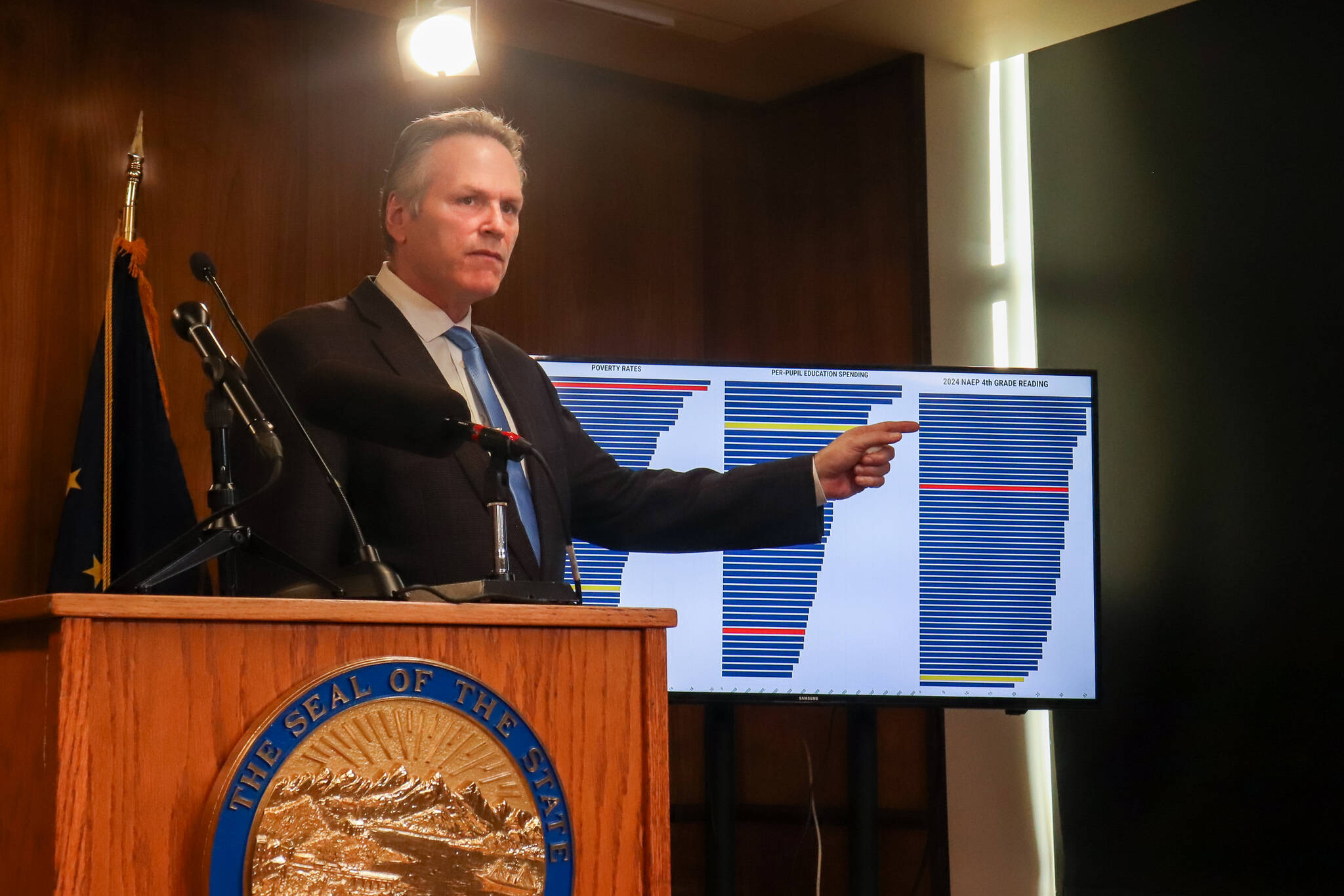Citing declining oil revenue, Gov. Mike Dunleavy on Thursday issued a veto in the state budget to reduce school funding below the amount specified by law, cutting the amount of funding the state provides to school districts per student by $200.
That number, the base student allocation, was increased by $700 in an education bill passed by the Alaska Legislature in May. Dunleavy vetoed the bill, but the Legislature overrode the veto to raise the BSA from $5,960 — the value it’s been since it was increased by $30 in 2017 — to $6,660.
Under Dunleavy’s veto in the state budget, districts will receive $6,460 per student — a roughly $50 million cut to education.
In recent years, though the BSA hadn’t been raised, one-time funding was passed by the Legislature. Last year Alaska districts received one-time funding equal to a $680 increase to the BSA. This year school districts will only see a $500 increase, and they’ll have less money to work with than last year. School districts and lawmakers have said that Alaska schools’ buying power has been severely impacted by a stagnant BSA, which hasn’t been increased substantially since 2011. They say an increase of $1,808 would have been needed to keep up with inflationary pressure.
The Kenai Peninsula Borough School District since March has been developing multiple budget scenarios to meet the level of funding the state will advance. Facing a $17 million deficit and with a fund balance almost wholly expended over years of deficit spending, each of the budgets describe significant cuts to programs, staffing and even facilities.
Since May, the borough has been working with a budget that assumes a $680 increase from the state — and even then the draft document describes closing Sterling Elementary School, Nikolaevsk School, all the district’s theaters and pools and making deep cuts to both teachers and programming.
The district in a press release this week said it hopes to reverse some of those cuts. When the KPBSD Board of Education meets next month, however, they will have even less money to work with than they did when they approved a budget that described millions of dollars in staff reductions and the closure of schools, pools and theaters.
Like in May, the Alaska Legislature could override Dunleavy’s veto of education funding, but to override a budget veto requires a steeper majority of 45 votes in favor from 60 lawmakers. In May, there were 46 votes in favor of the veto override.
In a Thursday release, the Alaska House Majority Coalition said Dunleavy’s veto “virtually guarantees” an override attempt, which will likely take place when the Legislature returns to Juneau in January.
Speaker Bryce Edgmon, I- Dillingham, called the governor’s veto “unnecessary and disappointing” but not unexpected.
“On hopefully, what is soon to be an energy renaissance in Alaska, it was disheartening to see vetoes that reduced important services like education funding, child care, Medicaid and others that Alaskans and our workforce will depend upon,” Edgmon said.
The coalition said it will continue to assess the impact of the governor’s vetoes in coming months.
Before then, by July 15, the KPBSD Board of Education has to finalize a budget and submit it to the State Department of Education and Early Development.
Reach reporter Jake Dye at jacob.dye@peninsulaclarion.com.

